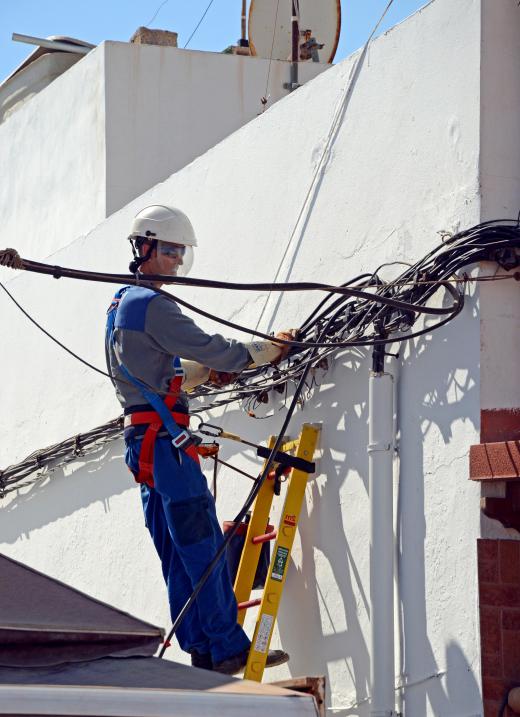A fall restraint is a device that is designed to protect people from falling. There are restraint systems that are designed to prevent falls and others that work to keep a person from being injured when a fall occurs. Some of the most common fall restraints are harnesses, guardrails, and safety nets. These devices are used by a number of different industries, especially construction, performance art, and sports such as rock climbing, where people are suspended high above the ground and are at risk of death or injury in the event of a fall.
The most commonly used type of fall restraint is a harness. Harnesses can fit around a person's legs and waist or around the legs, waist, and shoulders. Though there are harnesses that fit just around the waist, these do not offer much protection and can cause injury if a person falls. In order to be used as a fall restraint, a harness should be properly attached to a stable beam or wire that can safely hold the weight of the person. Construction, performing arts, and sports all commonly use harnesses as a primary fall restraint.

Guardrails can also be used as a type of fall restraint. These restraints prevent a person from falling by blocking them physically and by providing something to hold on to. Areas where falls are not likely, such as cliffs or elevated outdoor areas can use rails alone to prevent falls. Areas where dangerous falls are likely, such as construction sites, must use rails along with another type of restraint that can successfully keep a person safe if they do fall.
Safety nets can be used to keep a person from being injured in the event of a fall. These nets are placed below the surface where people are standing or walking and can catch a person that falls off the surface. The flexible material of the net cushions the fall, preventing serious injury.
Warning lines are also used as a type of fall restraint. These lines serve as a visual reminder that the person is near the edge of an elevated surface. They also provide a slight physical resistance though they are not usually strong enough to catch a person who is falling. On roofs, a slide guard, which comes off the edge at an upward angle, can be used as a physical block to stop objects or people from sliding off the roof.
